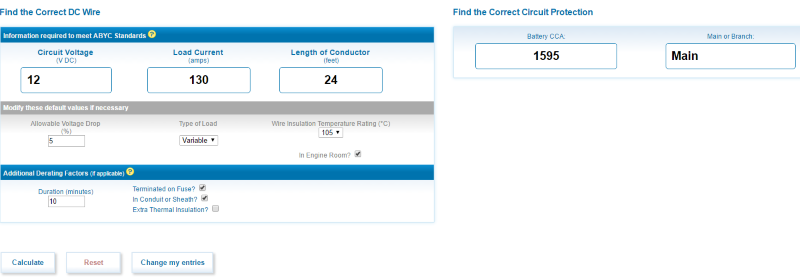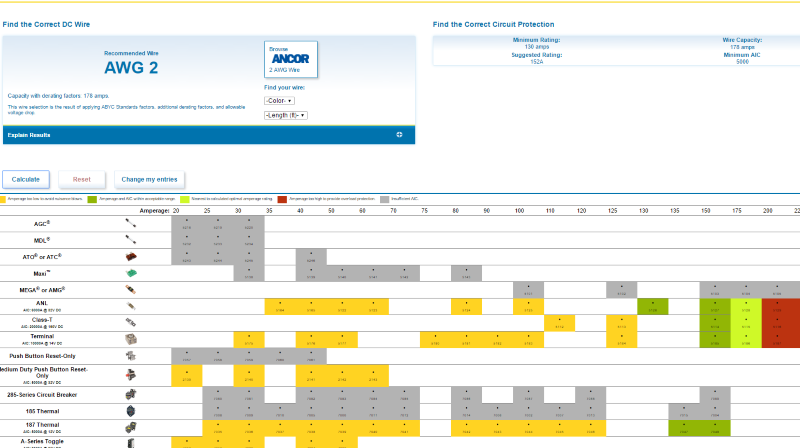I am a big user of the blue sea circuit wizard,
Circuit Wizard - Blue Sea Systemsso I generally input my data into that and see what the results are.
This is the data I used for my calculation
V10
Alternator 130 Amps
Starter motor normal load current draw 130-220 amps Max 800 amps
Starting Battery CCA 750
House Battery CCA 1595 1 -4D Lifeline
Note: the CCA is important for choosing the correct AIC rating for your fuse.
Length of wire from Start Battery to ACR 12 foot one-way or 24 calculated for full circuit. (The wire size will be impacted by your voltage drop setting, for this I set it to 5%, normally I would choose 3% or less it depends on the circuit and equipment)
Wire is rated for 105 C (this is important for your ampacity rating
There are derating factors you can put into the calculator, these are also important because they are going to have a big impact on calculation.
For this circuit I chose engine room, because a good section of the wire runs in the engine compartment and thus is subjected to heat. Lesser ones, that I checked in this case is wire in sheathing, and terminated at fuse, both of these cause extra heat but the engine room is the big factor here.
I generally set the load as variable, this covers surges
I also set duration to 10 mins, (I don’t really every expect to pump 130 amps through here for 10 mins)
Next for fusing I use the 1595 CCA spec for my 4D house battery, I choose main for the circuit, technically the one on the ACR could be considered a branch, but I am using the same fuse in both locations, this setting will require you to have a higher AIC rating for your fuse.
Circuit Wizard Input

Circuit Wizard Results

I apologize it is a little hard to read the fuse rating, but is says 150 amps shows the fuses or breakers that cover the AIC rating. I use the terminal fuses.
So the gap, like Boywonder said is in the jump starting, I am in the ball park for normal load of the starter, 130 – 220 amps. I expect that this will be like jump starting, where your starter is low, not completely dead, so I am comfortable with that. Also it hopefully would not be for a long duration.
-greg